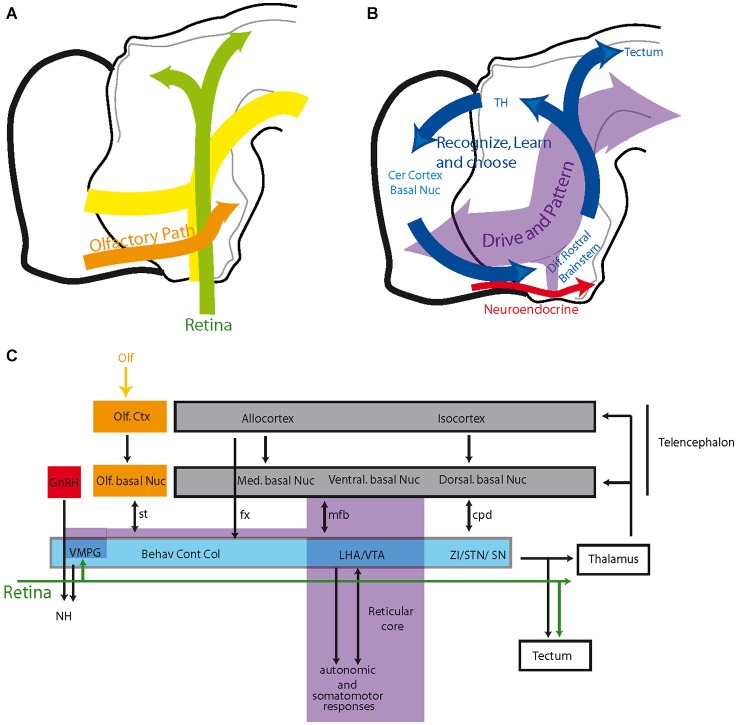Figure 5.
(A) Schematic organization of olfactory and optic pathways in the hypothalamus compared to the cell cord. (B,C) Organization of the prosencephalic connectivity. The hypothalamus and ventral midbrain are engaged in circuit loops (blue in B) that involve topographically organized descending inputs from the telencephalon and topographically organized outputs to the thalamus and tectum. These circuits play roles in behavioral expressions, voluntary motor responses and learning/memory. They are superimposed on a reticular core (including the VMPG), which is rostrally contiguous to the reticular brainstem, recalling the scaffold of the original cell cord, and are mostly involved with driving and patterning brain activities. See text for details. Abbreviations: Behav Cont Col: behavioral control column (medial zone nuclei of the hypothalamus); cer: cerebral; cpd: cerebral peduncle; ctx: cortex; fx: fornix; GnRH: gonadotropin-releasing hormone; LHA: lateral hypothalamic area; med: medial; mfb: medial forebrain bundle; NH: neurohypophysis; nuc: nucleus; olf: olfactory; SN: substantia nigra; st: stria terminalis; STN: subthalamic nucleus; TH: thalamus; VMPG: visceromotor pattern generator; VTA: ventral tegmental area; ZI: zona incerta.

